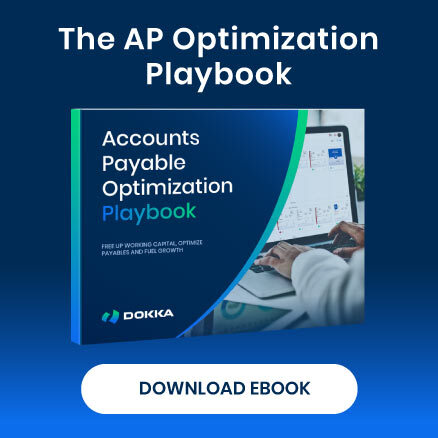As year-end approaches, the external audit becomes one of the most important milestones on the financial calendar. The quality and efficiency of that audit often depend on what happens before the auditors arrive.
Year-end audits can feel stressful, but they don’t have to be. A smooth, efficient, and value-adding audit starts with proactive communication with your external auditors.
Asking the right questions early helps align expectations, anticipate risks, and strengthen collaboration.
Not sure where to start?
This guide organizes 40 essential pre-year-end audit questions into seven practical categories, providing extra detail to help management and audit committees understand the implications and prepare thoroughly.
40 Questions to Ask Your External Auditors Before Year-End
- What’s the overall game plan for this year’s audit?
- Has the audit scope or approach changed from last year?
- Who will be on our audit engagement team?
- How will remote or hybrid work affect the audit process?
- What do you need from us before interim and year-end fieldwork?
- What is the expected timeline for issuing the audit report?
- What are the most significant risks you see in our business this year?
- How have you determined materiality for this audit?
- What key high-risk areas will you focus on?
- Are there any emerging risks we should discuss?
- How will you assess our internal controls?
- Are there unresolved issues from last year’s audit?
- How will you evaluate management’s accounting estimates and assumptions?
- Are there new accounting standards or interpretations we must apply this year?
- What documentation will you expect for key judgments?
- How will you test fair values, appraisals, or other complex calculations?
- How do you plan to assess going concern considerations?
- What regulatory or compliance changes could impact our audit?
- How will you handle ESG or sustainability-related disclosures?
- How do you plan to address fraud risk?
- How will you evaluate our internal control over financial reporting (ICFR)?
- Are there any industry-specific or regional developments we should be aware of?
- How can we streamline audit requests and avoid back-and-forth emails?
- How frequently will we communicate during the audit?
- How will you handle any disagreements with management?
- Who are the main points of contact on both sides?
- How will you report issues or findings as they arise?
- What’s your preferred format for sharing audit results?
- How will audit findings and recommendations be communicated?
- Will you provide practical recommendations for improving our controls?
- What happens if you identify significant deficiencies or material weaknesses?
- Will you provide benchmarking or best-practice insights?
- How do you define a “successful” audit from your perspective?
- How can we prepare now to make next year’s audit smoother?
- How do you maintain your independence and objectivity?
- Are there any services or relationships that could impair your independence?
- How do you ensure audit quality within your firm?
- Who reviews the engagement internally before the opinion is issued?
- How do you manage confidentiality and data protection during the audit?
- How do you leverage technology and analytics to improve the audit?
Audit Planning and Scope
1) What’s the overall game plan for this year’s audit?
Knowing the objectives, scope, and timeline allows your internal team to allocate resources effectively and prevent last-minute bottlenecks. It also provides a clear roadmap for coordination across departments.
2) Has the audit scope or approach changed from last year?
Understanding any changes in methodology, standards, or focus areas helps your team anticipate updated procedures or documentation requirements. It also enables early preparation for new areas of scrutiny.
3) Who will be on our audit engagement team?
Personnel continuity affects efficiency and institutional knowledge. Early introductions facilitate smoother communication and reduce onboarding time for new team members.
4) How will remote or hybrid work affect the audit process?
Clarifying digital workflows and document-sharing procedures prevents confusion and delays. It also ensures that security and access protocols are clearly defined for all parties.
5) What do you need from us before interim and year-end fieldwork?
Providing schedules, reconciliations, and support files in advance ensures timely preparation. It also allows your team to prioritize tasks and avoid last-minute data collection.
6) What is the expected timeline for issuing the audit report?
Coordinating report delivery with board meetings and regulatory deadlines helps avoid last-minute surprises. It also gives management the time needed to plan internal reviews and communications efficiently.
Risk Assessment and Materiality
7) What are the most significant risks you see in our business this year?
Identifying high-risk areas allows management to address operational changes that could impact financial reporting. Early discussion also helps prioritize resources to mitigate potential issues.
8) How have you determined materiality for this audit?
Materiality guides auditors’ focus and shapes which differences or errors are considered significant. Understanding this helps management evaluate which balances and disclosures are most critical.
9) What key high-risk areas will you focus on?
Auditors’ attention often centers on revenue, inventory, or estimates. Preparing these areas in advance improves documentation quality and reduces audit friction.
10) Are there any emerging risks we should discuss?
Emerging risks, such as cybersecurity threats, inflation, or ESG obligations, can influence audit procedures. Proactively addressing these risks demonstrates strong governance.
11) How will you assess our internal controls?
Understanding testing methods allows management to review and remediate controls proactively. It also provides insight into areas that may require additional oversight during the year-end close.
12) Are there unresolved issues from last year’s audit?
Addressing prior findings early prevents repeated observations and enhances credibility. It also signals to auditors and stakeholders that management is committed to continuous improvement.
Accounting Estimates and Complex Judgments
13) How will you evaluate management’s accounting estimates and assumptions?
Judgment-heavy areas, such as impairments or provisions, often attract scrutiny. Clarifying the approach early ensures documentation is thorough and assumptions remain consistent.
14) Are there new accounting standards or interpretations we must apply this year?
Ensuring compliance with evolving standards helps avoid last-minute adjustments. Early discussions also align management and auditors on any required disclosures.
15) What documentation will you expect for key judgments?
Providing clear guidance on memos, sensitivity analyses, and external valuations reduces disputes. It also enables management to prepare audit-ready evidence efficiently.
16) How will you test fair values, appraisals, or other complex calculations?
Confirming the methodology ensures assumptions align with audit expectations. Early dialogue helps prevent surprises if auditors challenge valuations or calculations.
17) How do you plan to assess going concern considerations?
Reviewing forecasts and mitigating actions supports an accurate evaluation of the company’s financial stability. It also allows management to address potential uncertainties in liquidity or operational risks proactively.
Compliance, Standards, and Regulatory Updates
18) What regulatory or compliance changes could impact our audit?
Tax reforms, ESG reporting, and disclosure updates can influence audit procedures. Awareness of these changes helps management prepare financials and disclosures appropriately.
19) How will you handle ESG or sustainability-related disclosures?
Even if limited assurance is not required, early discussions ensure alignment on reporting expectations. They also help management plan ESG initiatives in a way that supports reporting requirements.
20) How do you plan to address fraud risk?
Auditors’ focus areas guide management in strengthening anti-fraud controls. They also provide assurance that significant risks are actively monitored and mitigated.
21) How will you evaluate our internal control over financial reporting (ICFR)?
Early discussions align control expectations and regulatory standards. They also highlight areas needing improvement before testing begins.
22) Are there any industry-specific or regional developments we should be aware of?
Auditors’ insights into sector trends help management anticipate changes in reporting requirements. Such foresight supports proactive planning and governance.
Communication and Collaboration
23) How can we streamline audit requests and avoid back-and-forth emails?
Using portals and standardized templates saves time, improves efficiency, and reduces the risk of miscommunication or lost documents.
24) How frequently will we communicate during the audit?
Regular updates prevent misalignment and minimize last-minute surprises. They ensure management can act promptly on findings or requests for clarification.
25) How will you handle any disagreements with management?
Agreeing on escalation procedures ensures smooth resolution of issues and helps maintain a constructive relationship throughout the audit process.
26) Who are the main points of contact on both sides?
Clarifying communication channels avoids confusion during the audit and ensures accountability for document delivery and issue resolution.
27) How will you report issues or findings as they arise?
Early reporting enables management to address minor issues before they become material. It also helps maintain transparency with audit committees and stakeholders.
28) What’s your preferred format for sharing audit results?
Knowing whether findings will be shared via reports, meetings, or dashboards supports planning responses. It also allows management to allocate time for reviewing recommendations effectively.
Reporting, Findings, and Follow-Up
29) How will audit findings and recommendations be communicated?
Understanding the timing and format allows management to take prompt corrective actions, but also fosters collaboration and ensures issues are resolved efficiently.
30) Will you provide practical recommendations for improving our controls?
Auditors’ insights can guide process improvement and strengthen governance. Advice often extends beyond compliance, supporting long-term efficiency.
31) What happens if you identify significant deficiencies or material weaknesses?
Clarity on reporting enables management to act promptly and inform stakeholders. It also helps prioritize remediation efforts before the audit report is finalized.
32) Will you provide benchmarking or best-practice insights?
Comparisons with peers guide internal improvements and efficiency initiatives. They also give management confidence that processes meet industry standards.
33) How do you define a “successful” audit from your perspective?
Aligning expectations ensures a collaborative and value-adding audit. It establishes a shared definition of quality beyond simply issuing an unqualified opinion.
34) How can we prepare now to make next year’s audit smoother?
Auditors’ suggestions can improve documentation management, processes, and internal controls. Implementing these changes proactively reduces workload and errors in future audits.
Independence, Ethics, and Quality
35) How do you maintain your independence and objectivity?
Maintaining independence assures stakeholders that the audit opinion is impartial and trustworthy. It also demonstrates adherence to professional and regulatory standards.
36) Are there any services or relationships that could impair your independence?
Transparency ensures regulatory compliance and reinforces audit credibility. It also allows management to address potential conflicts early.
37) How do you ensure audit quality within your firm?
Internal reviews, training, and quality controls demonstrate reliability and professionalism. They reassure management and audit committees that procedures are thorough.
38) Who reviews the engagement internally before the opinion is issued?
Engagement quality reviews provide additional assurance that conclusions are well-supported and unbiased. They also highlight the checks and balances in the audit process.
39) How do you manage confidentiality and data protection during the audit?
Auditors’ data security and privacy protocols protect sensitive financial information. They also reduce the risk of regulatory or reputational issues arising from data breaches.
40) How do you leverage technology and analytics to improve the audit?
Modern audit tools enhance accuracy, efficiency, and insights, adding value to the process. They also enable auditors to detect anomalies or risks that might otherwise go unnoticed.
Making Year-End Audits Smarter and Smoother
A successful year-end audit is an opportunity to strengthen financial reporting, improve internal controls, and build confidence with stakeholders. Asking these 40 structured questions enables CFOs, management and audit committees to engage proactively with external auditors, clarify expectations, and address potential issues before they become critical.
Preparation, transparency, and collaboration are essential to reducing stress and ensuring a smooth audit process. Solutions like DOKKA can further streamline preparation by automating document collection, organizing financial records, and providing a clear audit trail for both internal teams and auditors.
Combining proactive questioning with smart digital solutions transforms the audit from a time-consuming obligation into a strategic advantage.
Ultimately, the right questions, paired with the right technology, make year-end audits not only efficient but also insightful and value-adding for the entire organization.




